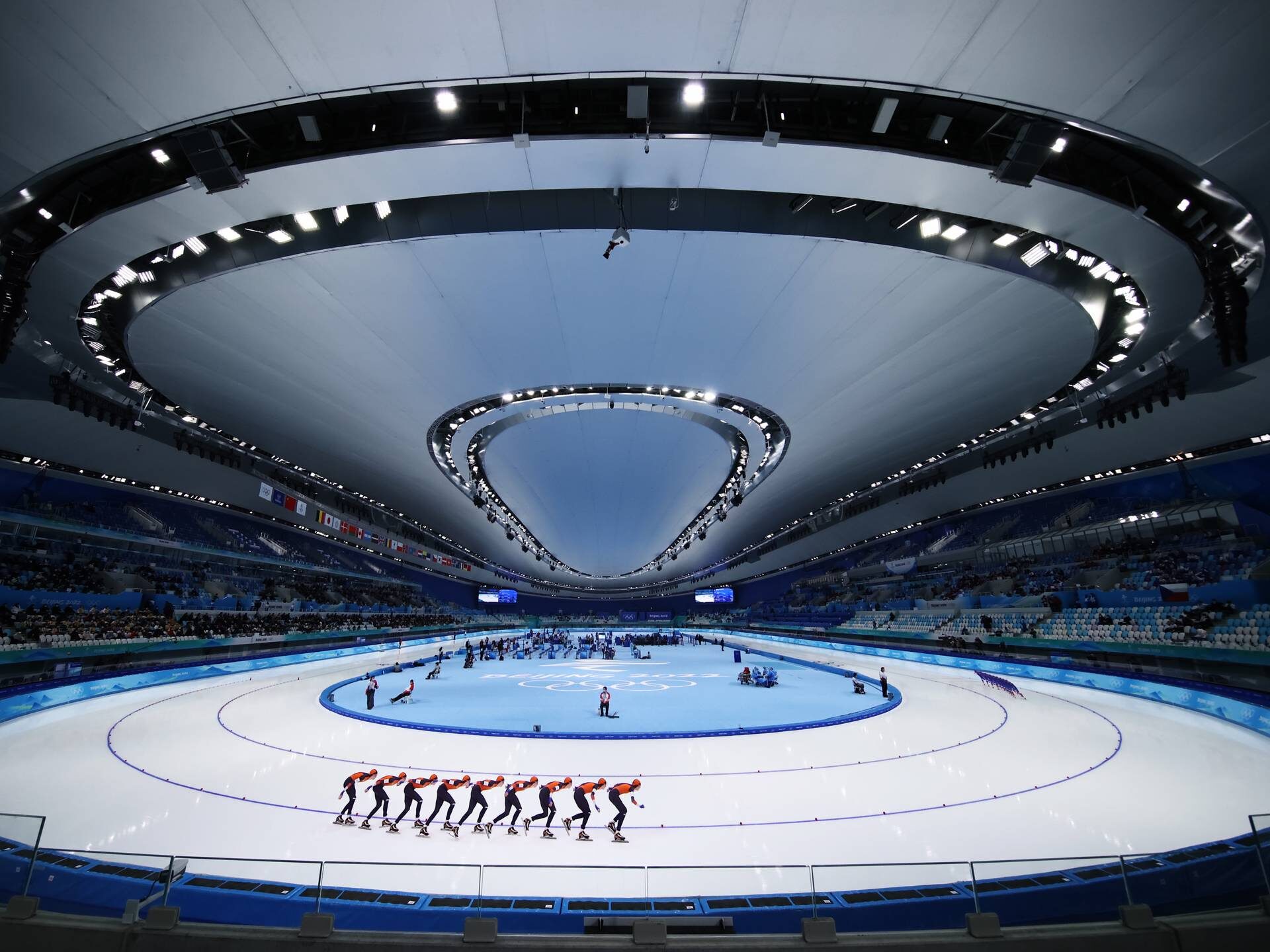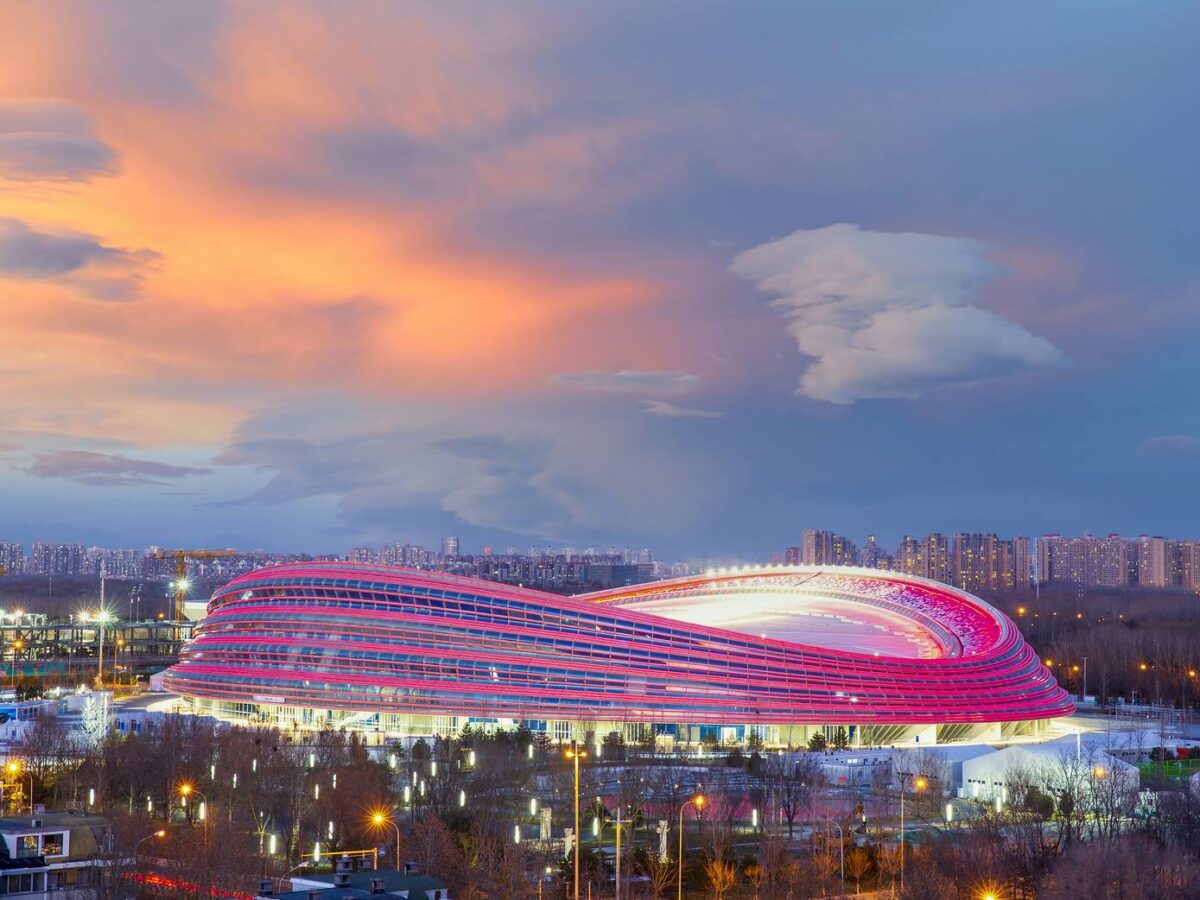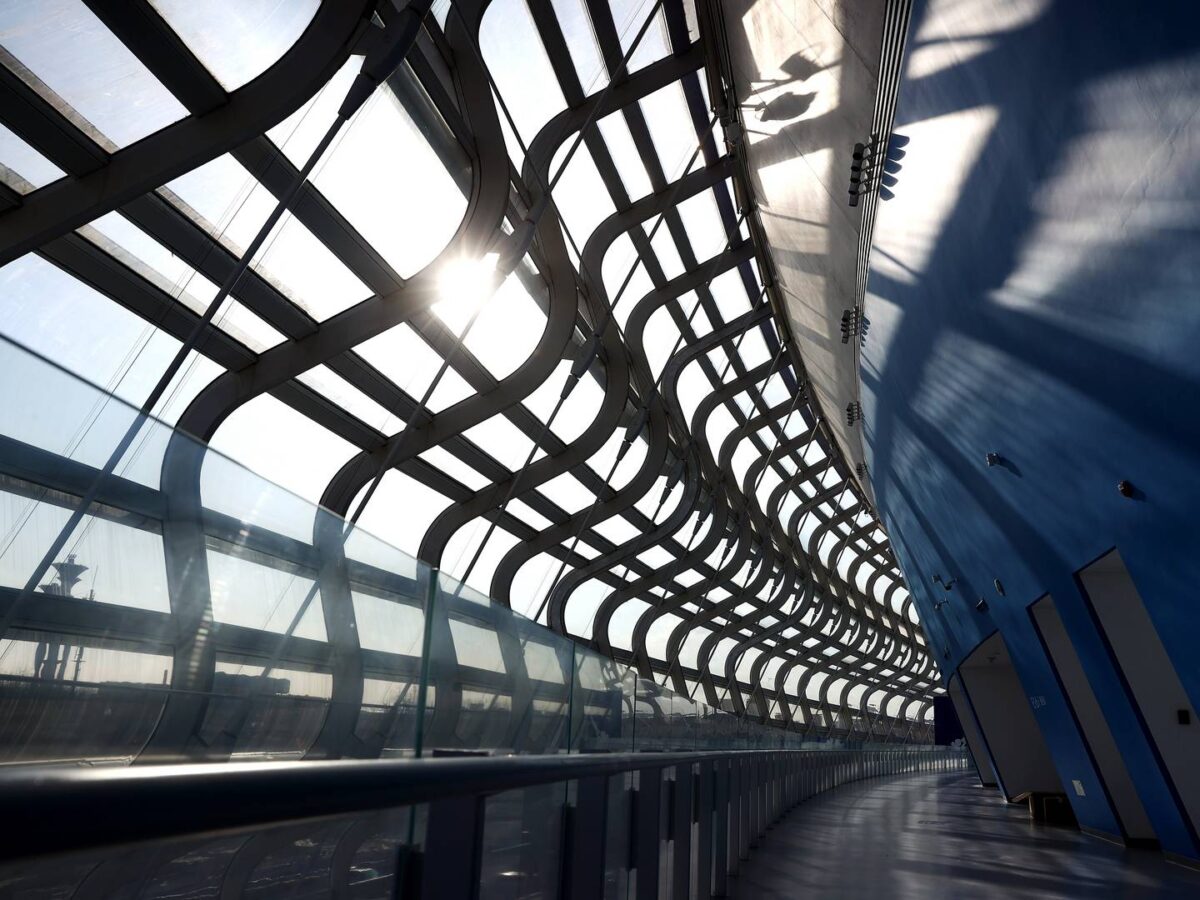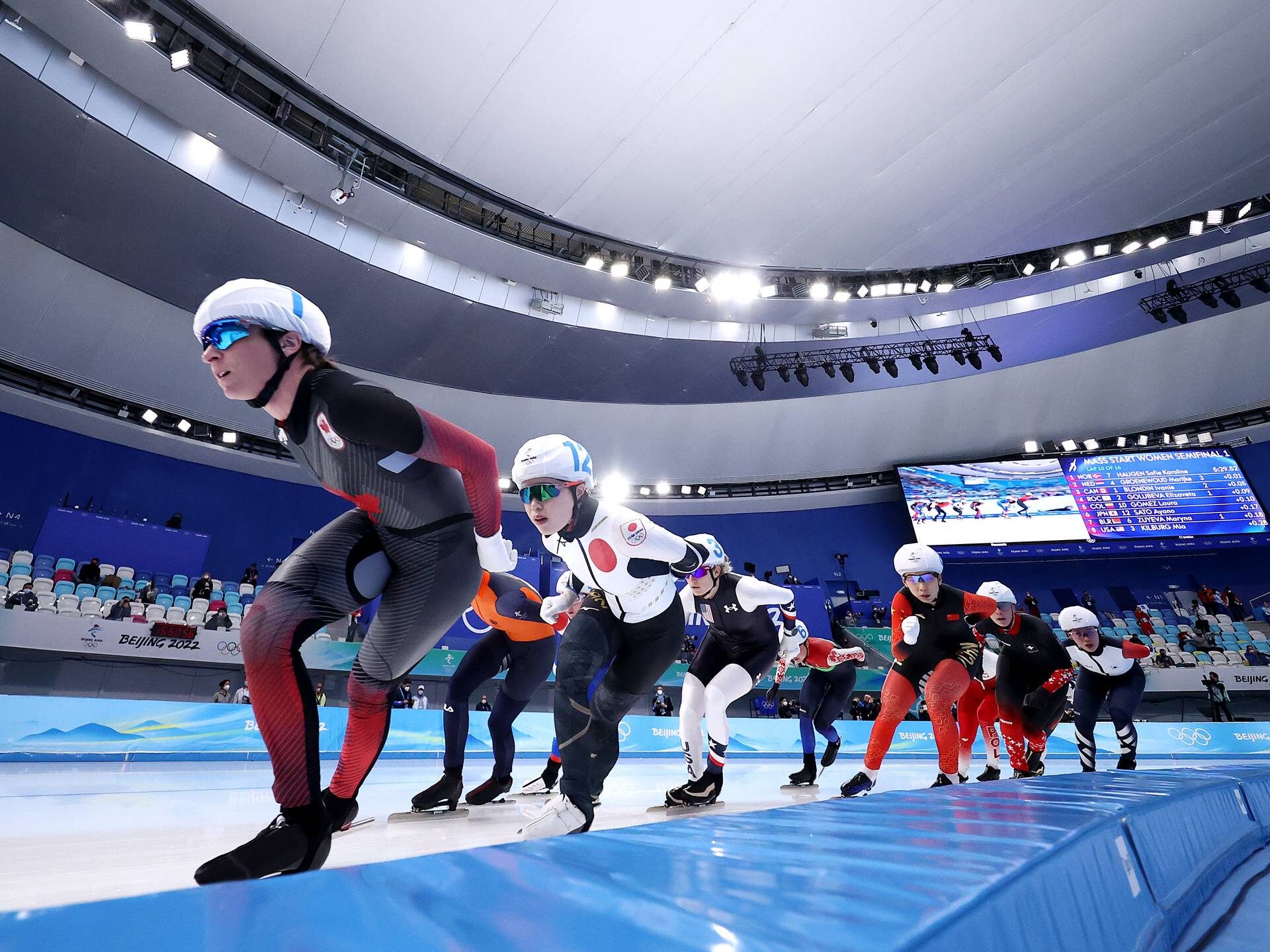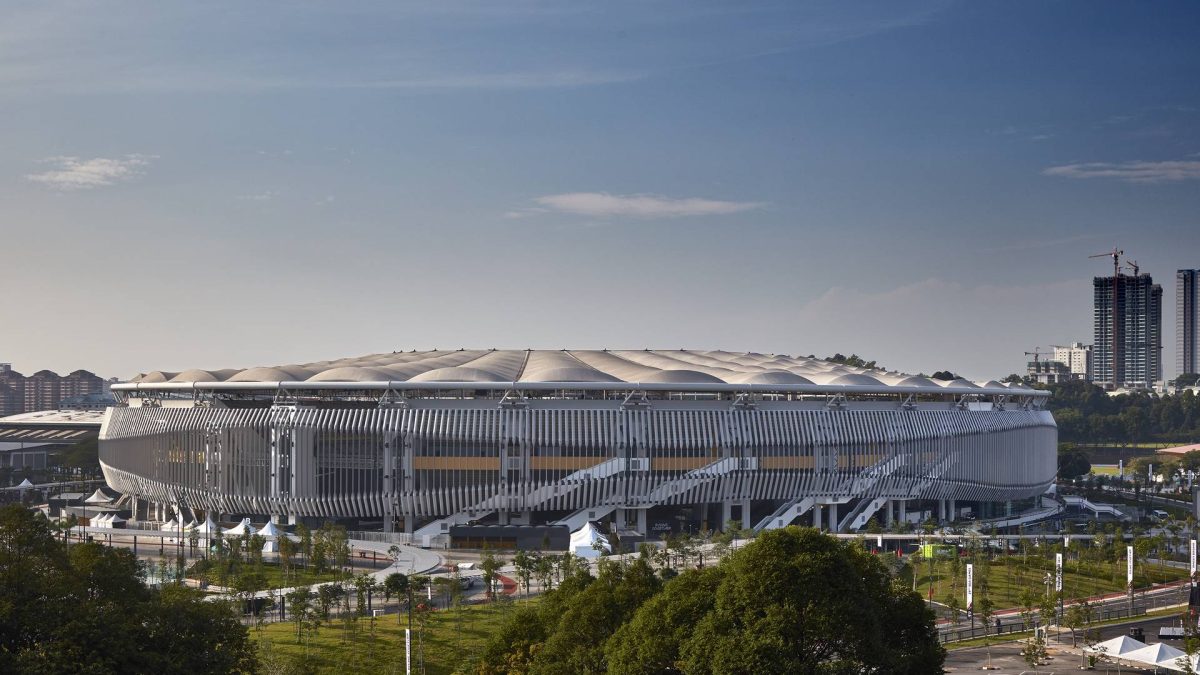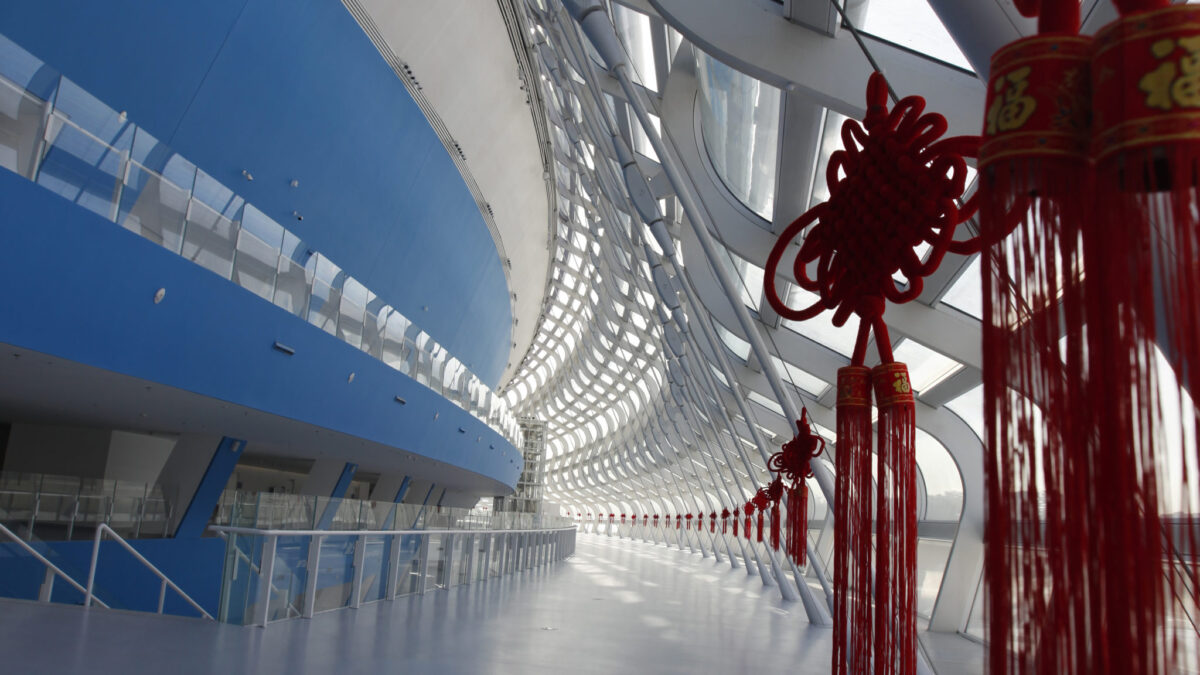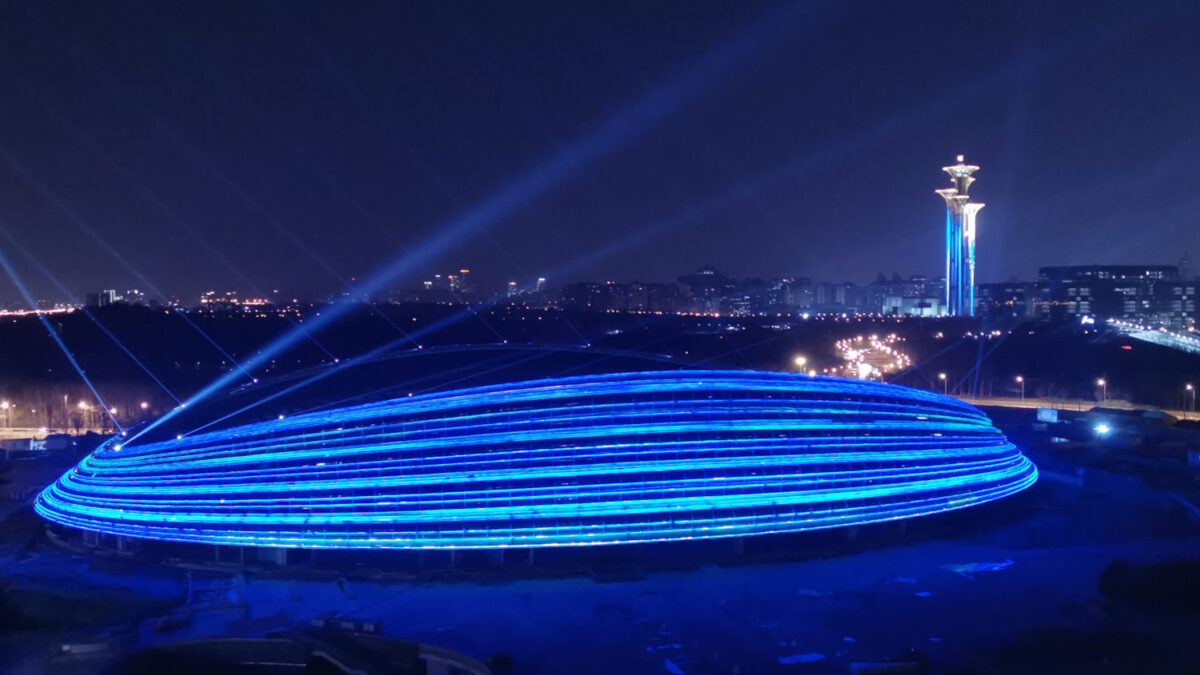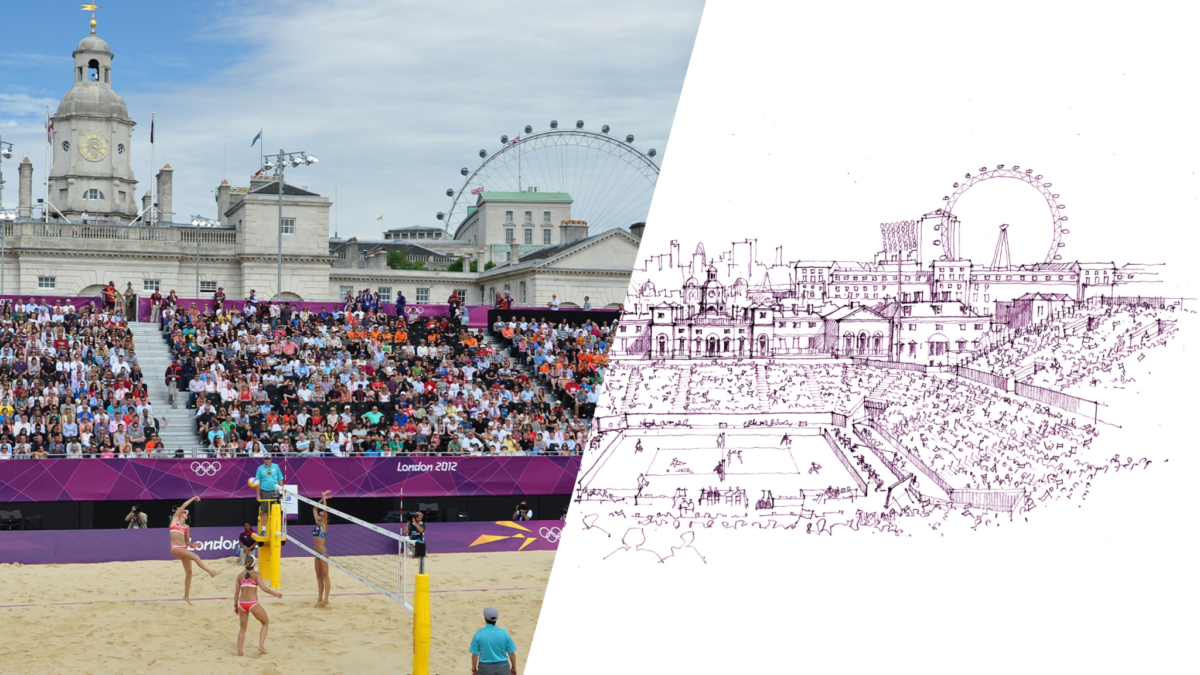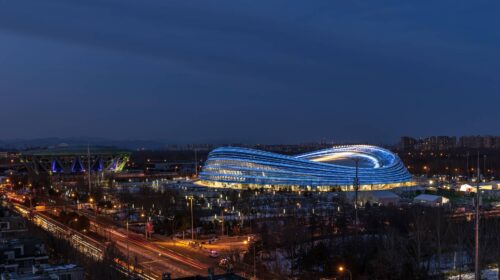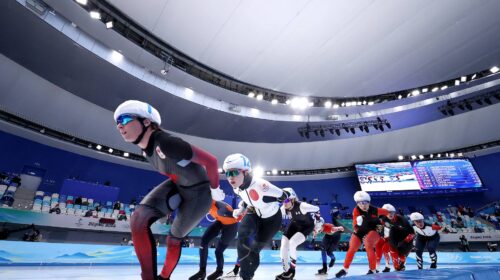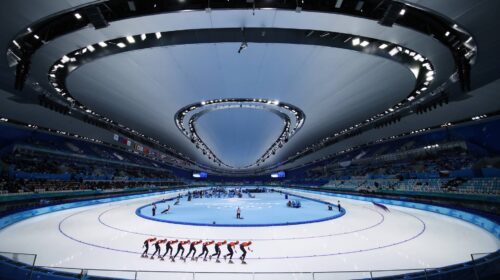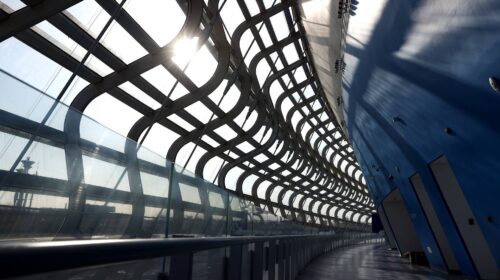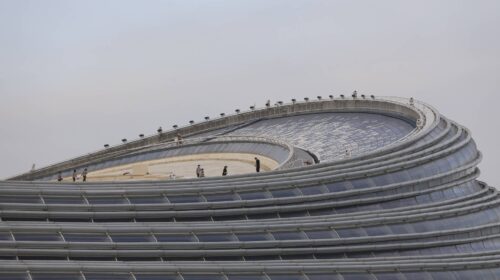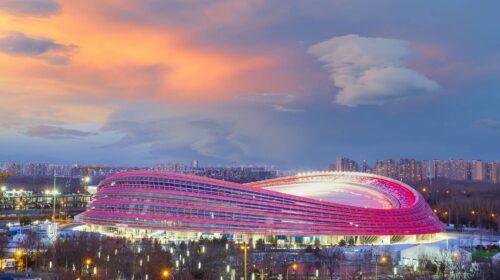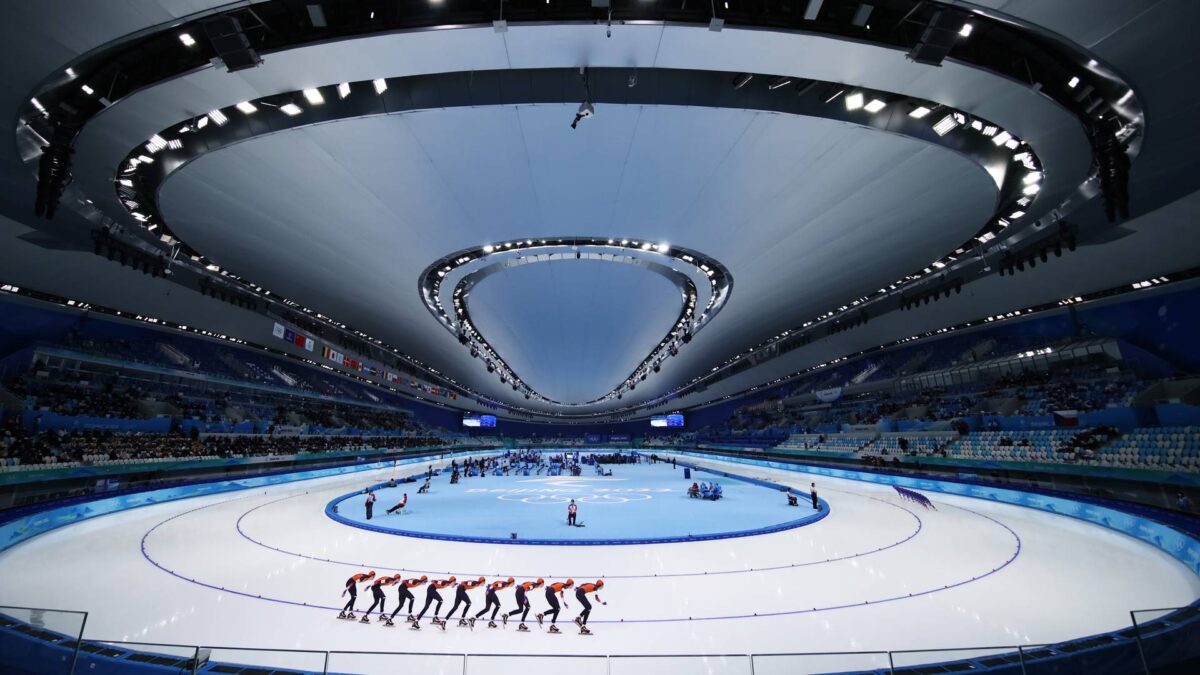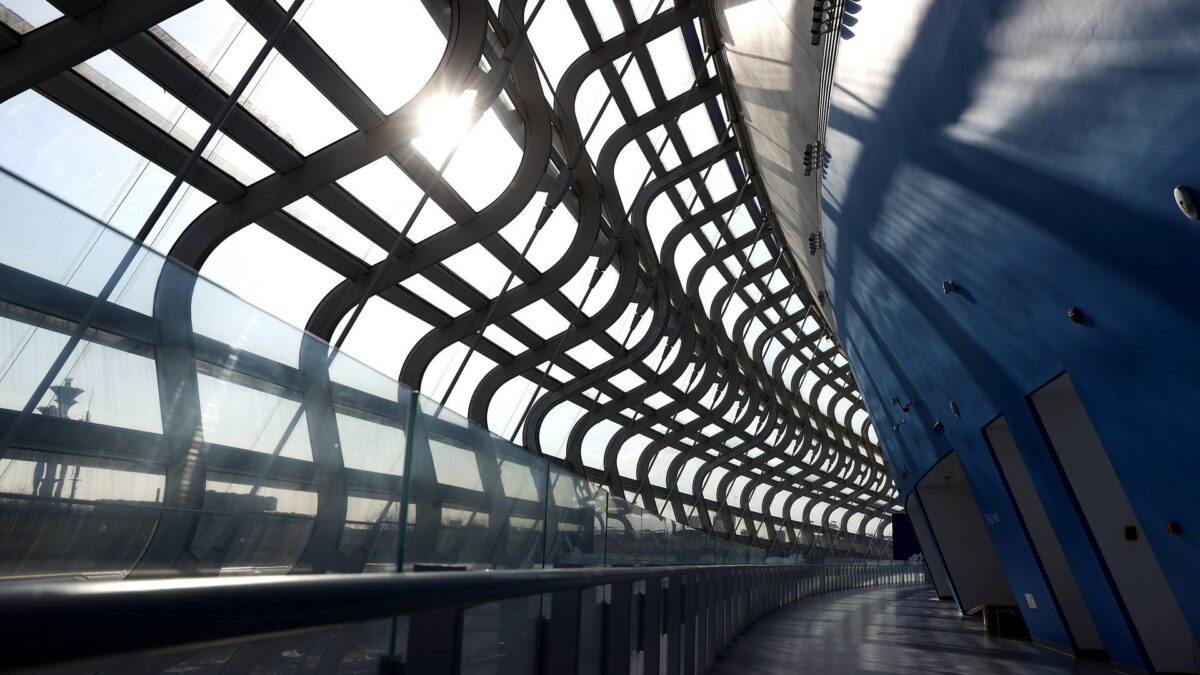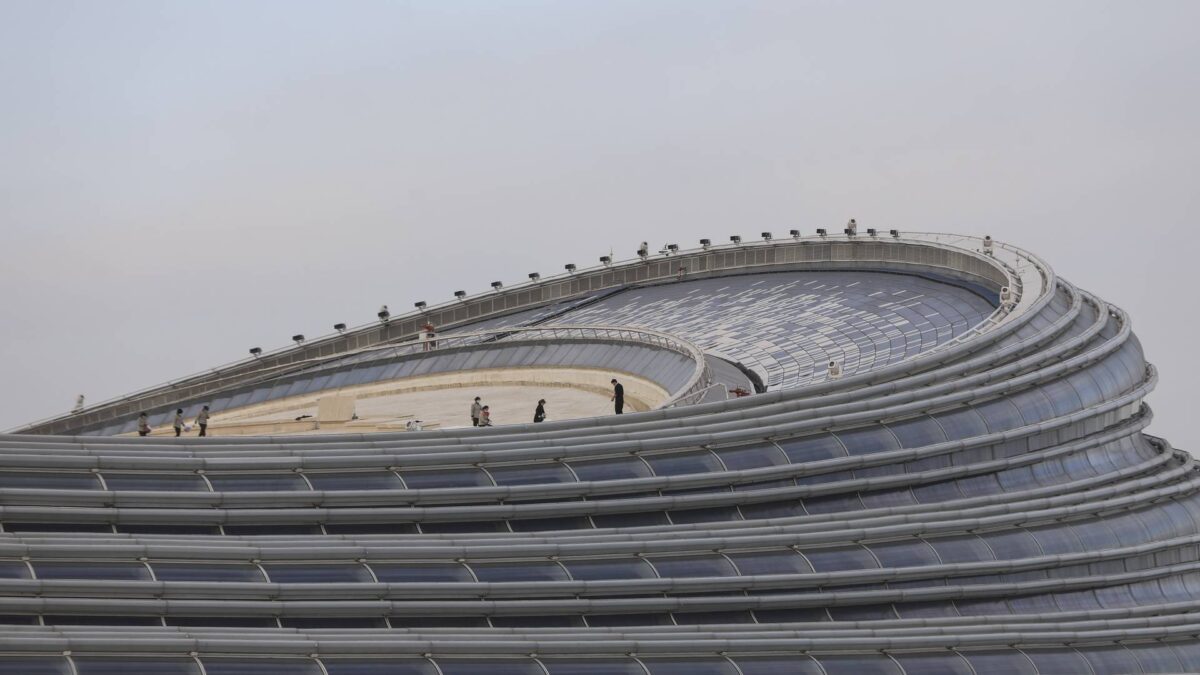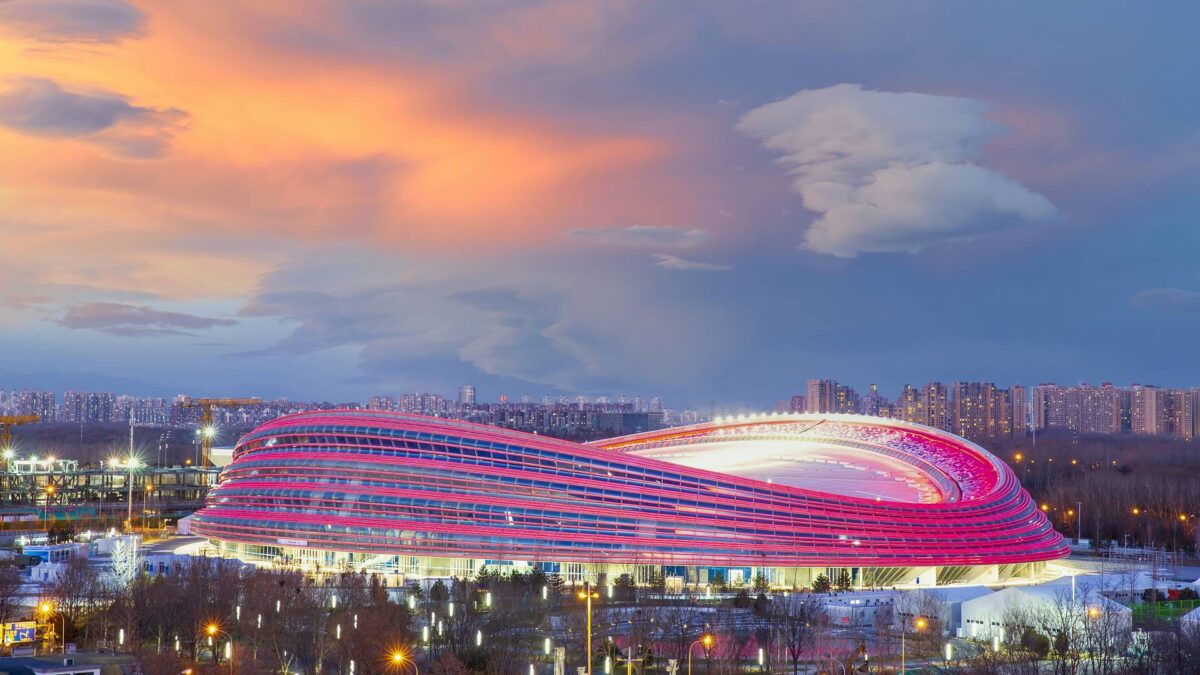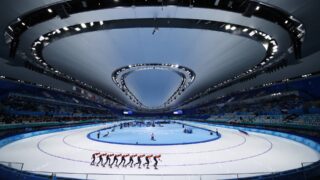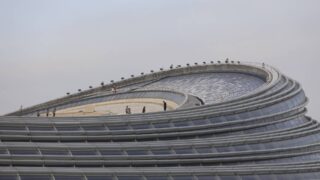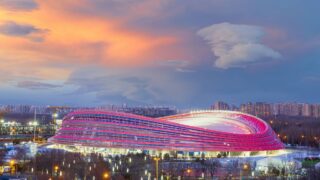Beijing, China
Beijing State Asset Management
When Beijing was chosen as the host city for the 2022 Olympic and Paralympic Winter Games, it was decided that a new venue was needed to act as a symbol for the event. This became the Ice Ribbon, an arena designed by Populous to stage the speed skating competitions.
Populous was selected to design the prestigious National Speed Skating Oval (NSSO, also known as the ‘Ice Ribbon’) in Beijing, following a rigorous worldwide design competition. It became the city’s iconic centrepiece for the 2022 Winter Olympic and Paralympic Games. This win consolidated Populous’ unparalleled Olympic experience, meaning we were involved in our 12th Olympic and Paralympic Games.
Our role in the competition process involved the management of a multitude of stakeholders across five countries and three offices to complete the full schematic design for the ‘Ice Ribbon’ in just 12 weeks. The facade was forged through several concepts and many iterations to reflect the inspiring nature of speed skating. In total, 66 firms took part in the competition including a large number of international practices.
The largest speed skating venue in Asia, the Oval complements the existing iconography of the Olympic Park, sitting alongside the majestic steel structure of the ‘Bird’s Nest’ and the dynamic membrane structure of the ‘Water Cube.’
Before the games were even underway, it was clear that a new Olympic icon had been created. A facade of 22 separate light strands flows up and around the Oval to a height of 33.8 metres, mimicking the precise racing lines drawn by the skaters inside, celebrating the elegance, pace and dynamism of the sport. At night, each strand lights up, shifting colors in an endless array of configurations that draws crowds.
The Oval is one of the first venues in the world to use carbon dioxide transcritical direct cooling technology for making the ice. Not only does this system reduce the building’s carbon emissions, it also makes it possible to achieve a temperature difference of less than 0.5C across the entire surface of the ice, which results in a track that is faster and stronger.
During the Games, the Oval accommodated 12,000 spectators, with 8000 permanent seats and 4000 temporary seats. Spectators packed out the stands, charging the atmosphere from seats positioned right up against the track. They were able to see every movement and hear every sound of the skates gliding over the ice. And once all the medals had been won and the Games concluded, the Oval was transformed into a public skating ring, ensuring its legacy in developing the next generation of Chinese athletes.
